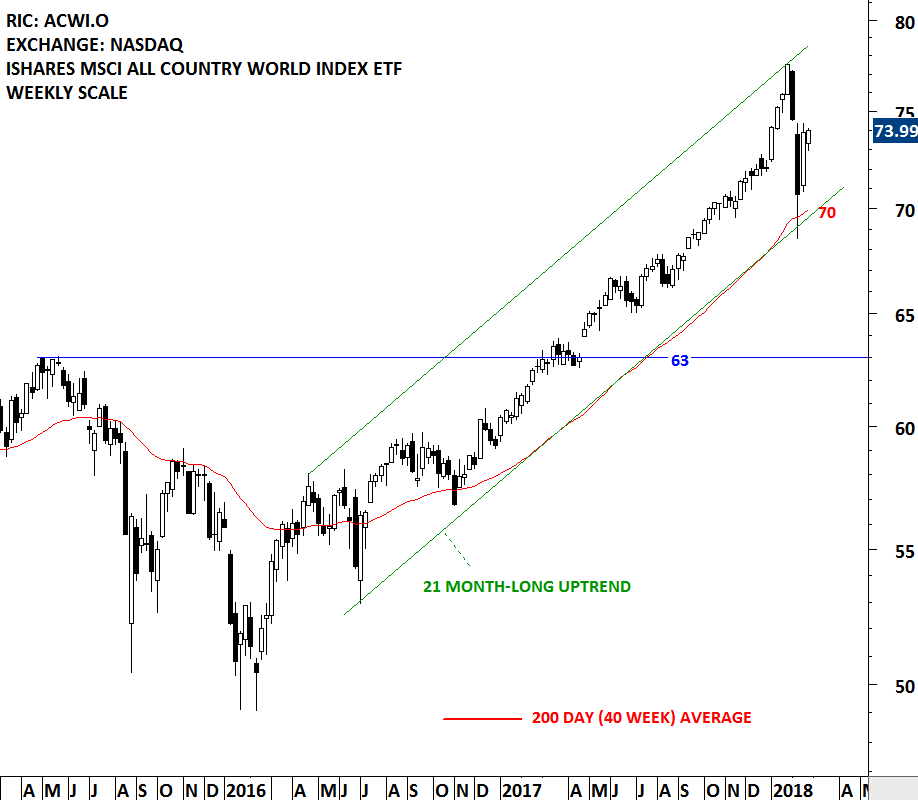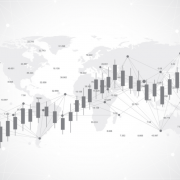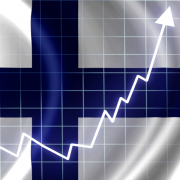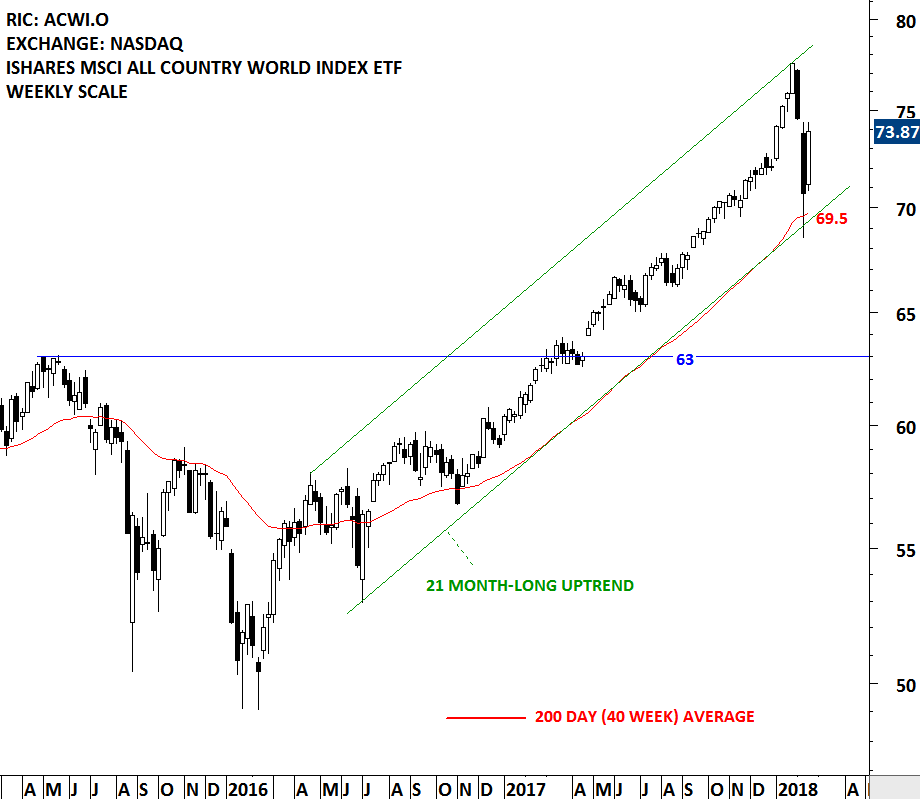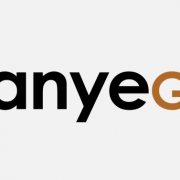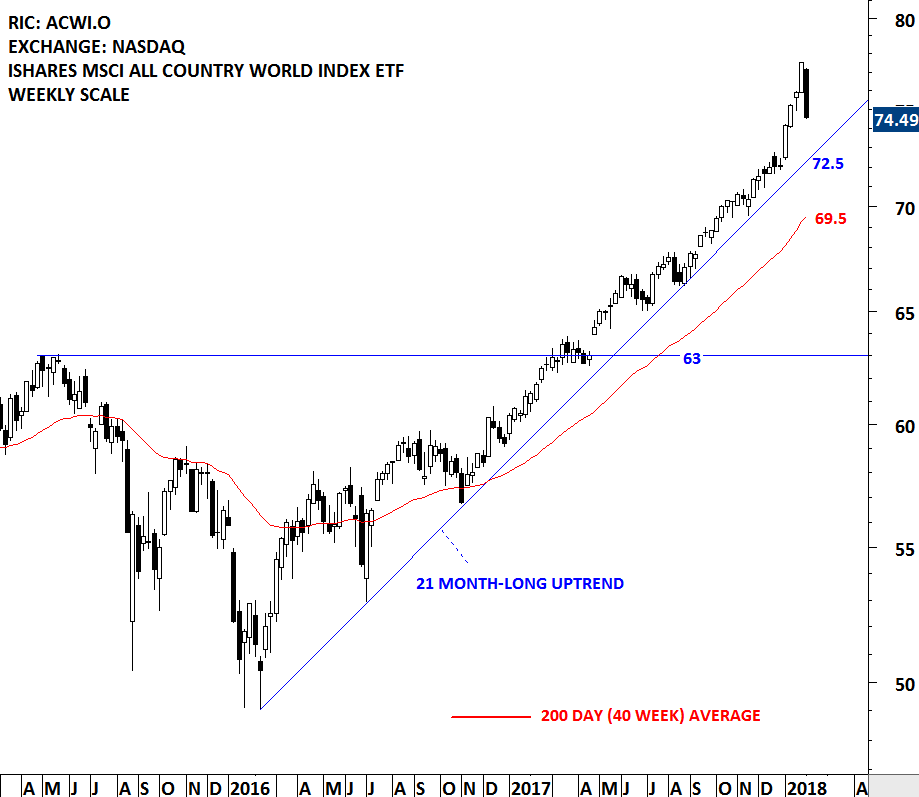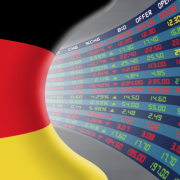GLOBAL EQUITY MARKETS – February 24, 2018
REVIEW
Global equity markets rebounded sharply and held on to last week’s gains. I follow the iShares MSCI All Country World Index ETF (ACWI.O) as a benchmark for the Global equity markets performance. The ETF is in a steady uptrend above the long-term (200 day, 40 week) average. Volatility increased in the month of February after the sharp sell-off in the equity markets. The ACWI ETF tested its long-term average which is now acting as strong support at 70 levels. Choppy sideways price action can continue for some time until we see lower levels on volatility. Usually, markets go through a period of consolidation after sharp corrections. I think we are in that stage.
